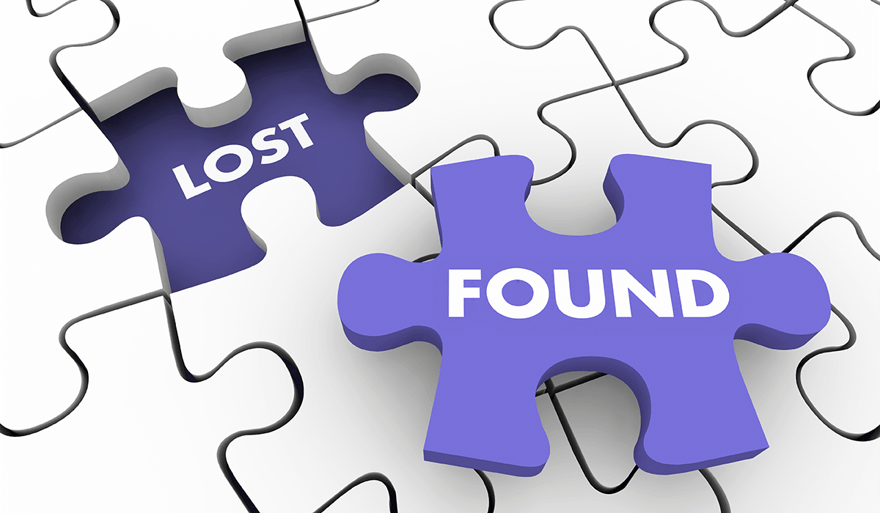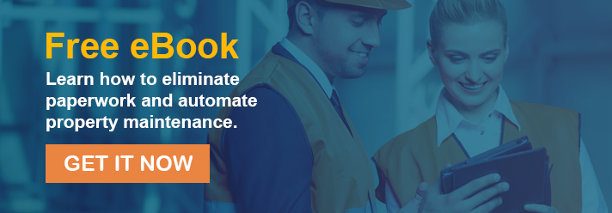Imagine executing the perfect event plan and still having dissatisfied guests. Even if everything else with your event goes as smoothly as possible, losing personal possessions can completely ruin a guest’s experience.
Your No. 1 goal is to make the guest experience the best it can possibly be, which means returning lost possessions is a huge opportunity to improve experience. When lost items are promptly found and returned to guests, a negative experience can be turned into an exceptionally positive one.
Although it’s likely that you have some procedure for lost and found items, many processes are either very inefficient or don’t work.
- Some event spaces conduct lost and found the old-fashioned way by simply collecting items and storing them in a designated area with no real tracking process.
- Others use software with limited capabilities.
This last point is an important one. There’s no reason a lost and found software shouldn't be in place, yet there are key differences between the products on the market.
In this article, we’ll dive into the importance of lost and found software, listing the benefits and what to look for when you’re ready to upgrade your game
What Is Lost and Found Software?
Did you know that the average person spends two and a half days per year looking for lost items?
As an event coordinator, you have the responsibility to help make this process less stressful and easily resolved if this ever happens at your event. The solution? A lost and found software.
At a high level, lost and found software is a centralized platform used to manage items that have been lost and then found. It replaces manual lost and found methods, such as manual data entry.
The software is most often used by organizations that attract large numbers of customers or guests, to create a digital network of these items in order to manage occurrences more efficiently. It performs two key functions:
- Streamlines the process of returning lost items to owners
- Stores and organizes data on collected items
To optimize the return rate, many software platforms provide search capabilities and images, as well as item categorization features to assist with the process.
How Does Lost and Found Software Work?
More and more people are becoming empowered with technology to find their missing items, and you can be part of the solution too. There are three key features that a lost and found software needs to provide to the user:
- Reporting
- Managing
- Returning
Reporting: Allow Users to Add Lost Items
First things first: As soon as someone brings a lost item to the appropriate location, users need to be able to quickly add lost items to the software.
It also allows guests or customers to report lost items through your website, either on the go from a mobile device or from the comfort of their home. They can include details of the item and their contact information, which is then saved directly to your software.
This provides huge benefits to your staff:
- They don’t need to spend time on the phone with customers, leaving your phone lines free for other important situations.
- They can quickly identify an item as a match as soon as the item is returned.
- They have multiple pieces of contact information to immediately contact the person who lost a possession.
With the right lost and found software, your staff moves quickly and your guests stay happy.
Managing: Collect, Track, and Match Items
The magic of lost and found software is in the seamless experience that allows you to manage items effectively and efficiently. To reduce work for your staff and increase customer satisfaction, there are three aspects of managing your lost and found department:
- Capturing valuable data
- Tracking lost and found items
- Matching items quickly
1. Capturing Valuable Data
What does your staff do when a customer reports a lost item? What happens when someone brings an item to them? What happens when the item is returned? You need to collect data every step of the way.
All of this valuable information becomes reports and analytics that let you know:
- How often you’re receiving new items
- What those items are
- How long these items have been in your possession
With this information, you have the insight to make important decisions on the next steps for unclaimed items.
2. Tracking Lost and Found Items
With software in place, lost and found management teams don’t need to struggle with the process and spend hours searching through storage bins. When a customer reports their lost item, your employees provide a receipt and print an associated storage tag to organize the item. Tracking, locating, and communicating details is easily accomplished in an efficient manner.
3. Matching Items Quickly
You need to be able to match a lost item to the person as soon as it is returned. Software makes this easy.
When a lost item is reported, you have specific information about the item. For example, if a phone is lost, you can include details on specific characteristics such as the type of phone, the image on the lock screen, and the location where it was lost. The software automatically recognizes the details of the found item and matches it with a lost item reported by your customer. Your employee can then find the details from your software and locate the item in seconds.
Returning: Enable Tracking Features That Report the Status of the Item
With the two previous steps well established, returning the item is the easy part. You’ve collected all the necessary data on the item, categorized the item to make it easily accessible, and have the contact information to quickly contact the person as soon as the item is returned.
It’s not just easy—it’s the most rewarding part of the experience for you and your guests.
What Are the Benefits of Using Lost and Found Software?
It goes without saying that the No. 1 thing you want is for your attendees to have the best possible experience at your event.
If you’re reading this article, you’re most likely in one of two different camps:
- You don’t have software to manage lost and found items. Instead, you’re simply letting items collect in a designated area, which doesn’t allow your staff to be proactive in returning the items.
- You have software, but there's far too much manual labor involved in data entry.
By harnessing the power of lost and found software, you’ll experience benefits like these:
- Eliminate manual data entry: Weaker software doesn’t feature robust service offerings such as automated data entry. Spreadsheets require far too much manual work.
- Fully automate the process: From the moment the item description and contact information are entered, the entire process is automated to ensure quick resolution.
- Centralize data: Housing your data in one place guarantees that it will be easily tracked and shared across your organization.
- Build credibility: With quicker, better results comes a better overall customer experience.
- Make searching for lost items easier: Segmentation and organization allow your team to search items quickly and with purpose.
- Easier organization: Gone are the days of simply tossing every item in one storage box. Now, you know exactly where each item is based on the organizational rules you establish.
How Can You Get Started with Lost and Found Software?
Now that you’re ready to implement lost and found software, it’s important to recognize that not all software functions at the same level.
While many provide some level of automation and categorization, you need to know that nothing falls through the cracks. Receipts, intelligent item identification, and inventory enablement are just a few of the features that make up robust software.
Here’s what to look for in lost and found software:
- Customers can report missing items to web forums: Guests can report lost items directly from your website and enter specific information about the item, which reduces the hours needed for staff to document lost items.
- Email or print receipts: You can eliminate storage chaos and tag found items easily to ensure the correct item goes to the proper owner.
- Utilize intelligent item identification: Once an item is found, the system matches it to a reported item, allowing you to find items in seconds.
- Keep comprehensive digital records: With the power to generate reports, you can have a clear understanding of the items in storage and how long they’ve been there so that you know what to do with unclaimed items.
- Enable barcode inventory: Scan items quickly to be released to your guests and give them a sense of ease.
Create the Perfect Customer Experience with a Lost and Found System
Losing personal belongings is stressful to both the person who lost an item and the organization where it happened. But it really doesn’t have to be!
With 24/7 Software’s Intelligent Lost and Found Software, a seamless experience is possible. From the time the item is brought to your lost and found management team to the moment it is returned to the owner, everyone benefits from the fully automated process.
Don’t waste any more time! Request a demo today!




